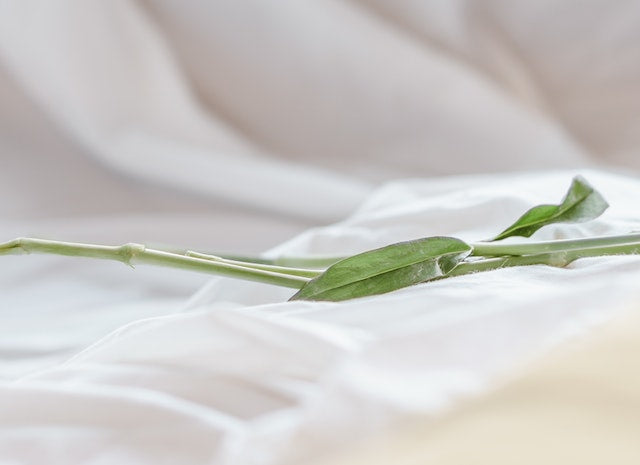
Almost all animals have sleeping habits, but sleep times vary from animal to animal. While some creatures sleep more than 18 hours a day, others only need a few seconds of sleep at a time.
Habitat, cold- or warm-blooded animal anatomy, brain size, eating habits, and many other factors contribute to animals' sleeping habits.
Generally, genetically similar species have similar sleeping habits. That's why we've separated the different species below and highlighted some specific organisms in each section.
From sharks to puppies, wild creatures are fascinating and their sleeping habits are no different. Every little thing we learn about the other organisms around us can help protect the wild places we live in.
To spark the curiosity of the next generation of biologists and scientists, we've included educational printable activities to help kids learn about sleeping patterns in some of the wildest places on Earth.
Do all animals sleep?
It is not known whether all animals need sleep , but it is essential for most of them in order to function normally. The brain's metabolism—or the chemical processes needed to keep the body in order—depends on sleep to recharge. This process is relatively similar in all animals.
Without sleep , the brain begins to shut down. The longest recorded period of wakefulness for a human being is 264 hours (approximately 11 days). Hallucinations, memory loss, and mood swings are notorious side effects of long periods of wakefulness, but they are all temporary. The individual who remained awake for 11 days recovered after a few days of normal sleep . It seems that the animal kingdom is of the same ilk.
In the animal kingdom, sleep is more complex. Since most animals are at their most vulnerable when sleeping, sleep is rarely considered a luxury.
Which animals sleep the most?
In the animal kingdom, sleep duration can vary from a few hours to almost 24 hours. These rhythms are not only beneficial for health, but above all for protection against predators. Living organisms have adapted to integrate sleep into their daily lives. Bears, for example, are able to hibernate for many months when food is scarce and the air is cold, but they also need to sleep from one night to the next.
Here are some of the animals that sleep the most on average:
- Brown bat : 20 hours per day
- Leo : 19 hours per day
- Giant armadillo : 18 hours per day
- North American Opossum : 18 hours per day
- Tiger : 18 hours per day
- Cat : 14 hours per day
- Dog : 13 hours per day
It is important to note that each sleep duration depends on the environment. A wild dog will sleep much less than a domestic dog. A wild bear will have different sleeping habits than a zoo bear.
Sleeping habits of terrestrial and aerial mammals
Many land and air mammals require a special type of sleep called rapid eye movement (REM) sleep . Animals like dogs, primates, and, of course, humans, experience REM sleep . This is the deepest phase of a mammal's sleep and the part of nighttime rest where dreams occur.
One of the reasons mammals need REM sleep is to keep the skull and brain warm. This allows bodily functions to remain normal and regeneration processes to proceed smoothly. Metabolism and the ability to process food are functions particularly influenced by paradoxical sleep.
Without REM sleep, most mammals can die because their bodies shut down. For some animals, like owls, this changes with age. Owls spend almost 50% of their sleep time in REM sleep, while adults only spend 25%.
However, not all mammals need REM sleep : bears and other hibernating animals don't need it at all. During winter dormancy , an animal's metabolic processes are 20 times slower than when it is awake. The body temperature of hibernating animals is generally one degree Celsius higher than that of the surrounding air. This means that during the winter months, hibernating animals sleep at a much deeper level than REM sleep in order to save energy.
Sleeping Habits of Marine Life
Marine organisms have very different sleeping habits than land and air animals. Whales, for example, float vertically, with half of their brains awake while they sleep . Whales only nap for about 7% of the day, for a maximum of 10 minutes. This lack of sleep is believed to be due to the eating habits of their predators.
Dolphins, on the other hand, sleep vertically on the surface of the water. Sometimes called "lumberjacks," dolphins remain almost motionless and slowly inhale air. To do this, they also sleep with one side of their brain activated.
Almost all shark species sleep in the same way as dolphins. The nurse shark is an exception, however, and can sleep completely motionless on the ocean floor.
Fish frequently enter and exit sleep , both to avoid predators and to properly filter oxygen. They stop swimming and float, or lie dormant between natural structures underwater for protection and bob up and down.
Amphibian Sleep Habits
The sleep habits of amphibians have not been the subject of much research. We don't really know if frogs sleep. They have been observed motionless and closing their eyes while sitting on foliage, which is assumed to be their sleeping state, but researchers are not yet sure.
Some species of newts, however, are capable of sleeping deeply. In warm climates, some species of this amphibian burrow deep into the ground. They can thus find humidity and avoid predators for hours.
Likewise, the tiger salamander burrows deep into the ground and spends most of its time there, both awake and asleep. The main difference with this animal is that it is nocturnal. This means that during the day it enters a deep sleep and emerges once the sun sets for brief periods of hunting.
Reptile Sleeping Habits
Depending on the species, reptiles have different sleeping habits. Snakes, for example, don't have eyelids, meaning they can't close their eyes to sleep. Instead, they lie still with their eyes open as brain functions slow down and the entire body rests. Snakes also hibernate in cold countries during the winter months, and in the south, where the weather is warmer, they brood, that is, they slow down their metabolism without sleeping.
Crocodiles also sleep with half their brains working. Unlike other species lower on the food chain, the main reason crocodiles sleep this way is because they are alert to nearby prey. While sleeping, they leave one eye open (which is connected to the “awake” side of the brain).
Crocodiles are also primarily nocturnal, meaning they must remain semi-alert during the day, as that is when some of their prey is active. Since it is generally colder at night, living organisms use less energy to keep warm than if they were nocturnal. This is one of the reasons why many nocturnal animals, such as the crocodile, are cold-blooded.
American alligators have an interesting twist on traditional hibernation. When temperatures are extreme, the animal creates an “alligator hole.” These 1.5 meter long tunnels fill with mud and water, and the alligator remains dormant during periods of intense heat or cold. In normal weather, like crocodiles, alligators are nocturnal but may wake up during the day to hunt and seek safety .
Insect Sleep Habits
Most insects sleep – in fact, they look a lot like humans. Bees , for example, nap during the day when there is little work to be done in the hive.
Fruit flies also sleep . Like humans , they respond to chemicals that alter sleep , such as caffeine . These insects also have circadian rhythms similar to mammals, meaning their bodily functions depend on solid, regular sleep . Although it is unclear whether REM sleep is achieved, fruit flies regenerate and build important mechanisms in the body during sleep .
Cockroaches also depend on regular sleep . Cockroaches keep their eyes open during sleep because they (and many other insects) do not have eyelids. However, these insects fold their antennae to protect important organs and vulnerable areas during sleep .
It's important to know the animal kingdom, because humans are part of it! Although animals sleep differently, most of them sleep. Sleep better with your future duvet covers , bed sets and pillowcases .









